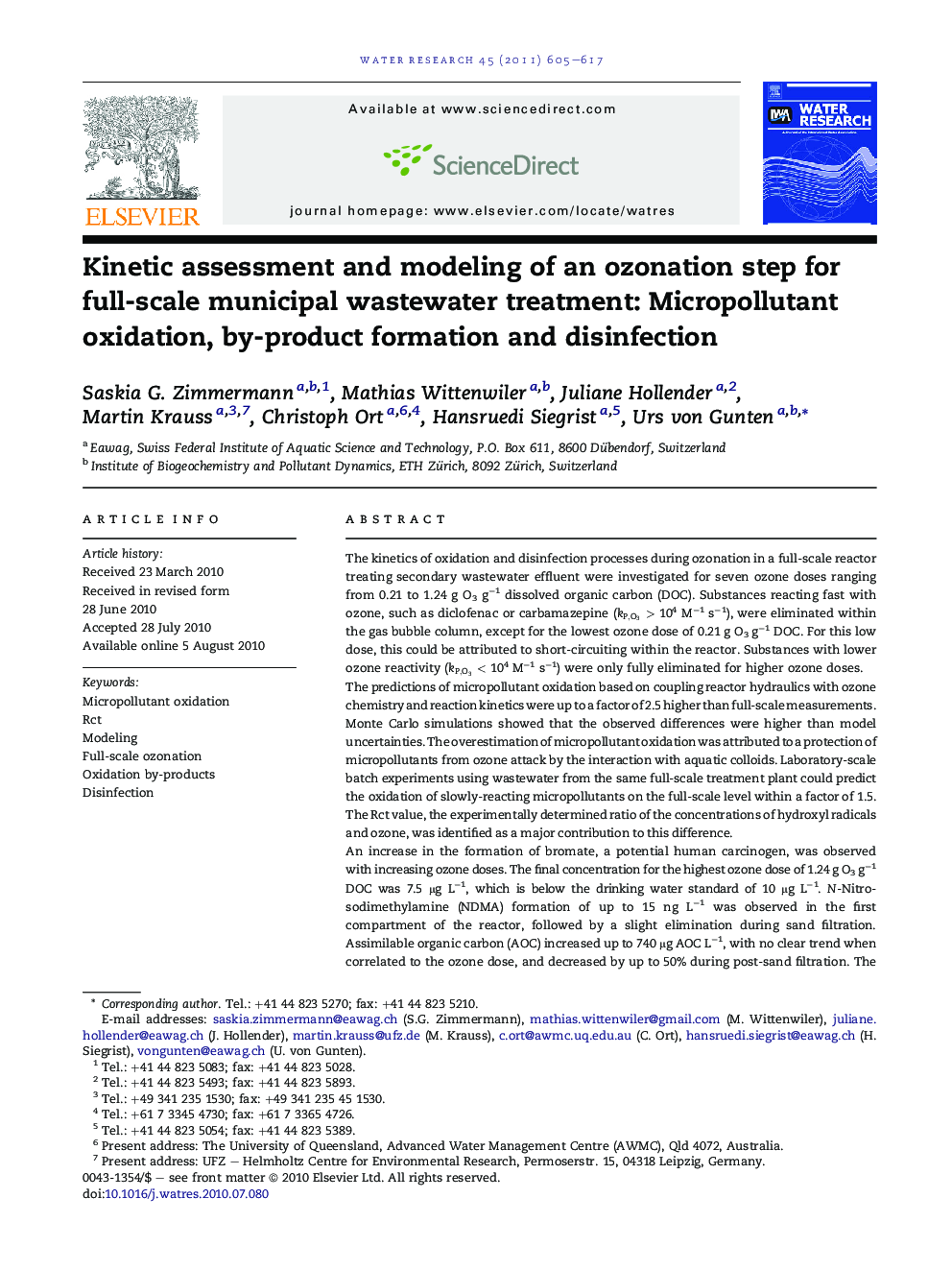| کد مقاله | کد نشریه | سال انتشار | مقاله انگلیسی | نسخه تمام متن |
|---|---|---|---|---|
| 6367954 | 1316896 | 2011 | 13 صفحه PDF | دانلود رایگان |
عنوان انگلیسی مقاله ISI
Kinetic assessment and modeling of an ozonation step for full-scale municipal wastewater treatment: Micropollutant oxidation, by-product formation and disinfection
دانلود مقاله + سفارش ترجمه
دانلود مقاله ISI انگلیسی
رایگان برای ایرانیان
کلمات کلیدی
موضوعات مرتبط
مهندسی و علوم پایه
علوم زمین و سیارات
فرآیندهای سطح زمین
پیش نمایش صفحه اول مقاله

چکیده انگلیسی
An increase in the formation of bromate, a potential human carcinogen, was observed with increasing ozone doses. The final concentration for the highest ozone dose of 1.24 g O3 gâ1 DOC was 7.5 μg Lâ1, which is below the drinking water standard of 10 μg Lâ1. N-Nitrosodimethylamine (NDMA) formation of up to 15 ng Lâ1 was observed in the first compartment of the reactor, followed by a slight elimination during sand filtration. Assimilable organic carbon (AOC) increased up to 740 μg AOC Lâ1, with no clear trend when correlated to the ozone dose, and decreased by up to 50% during post-sand filtration. The disinfection capacity of the ozone reactor was assessed to be 1-4.5 log units in terms of total cell counts (TCC) and 0.5 to 2.5 log units for Escherichia coli (E. coli). Regrowth of up to 2.5 log units during sand filtration was observed for TCC while no regrowth occurred for E. coli. E. coli inactivation could not be accurately predicted by the model approach, most likely due to shielding of E. coli by flocs.
ناشر
Database: Elsevier - ScienceDirect (ساینس دایرکت)
Journal: Water Research - Volume 45, Issue 2, January 2011, Pages 605-617
Journal: Water Research - Volume 45, Issue 2, January 2011, Pages 605-617
نویسندگان
Saskia G. Zimmermann, Mathias Wittenwiler, Juliane Hollender, Martin Krauss, Christoph Ort, Hansruedi Siegrist, Urs von Gunten,